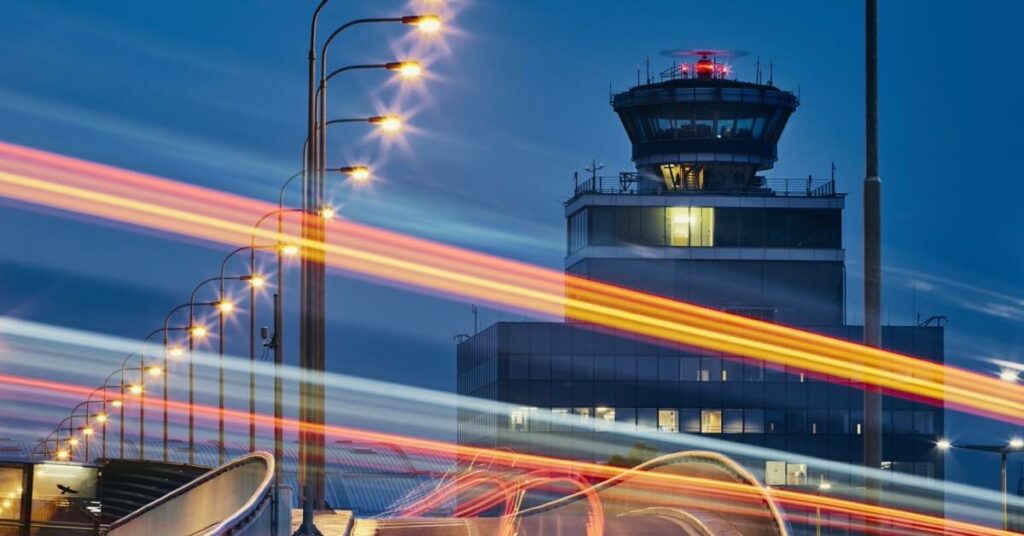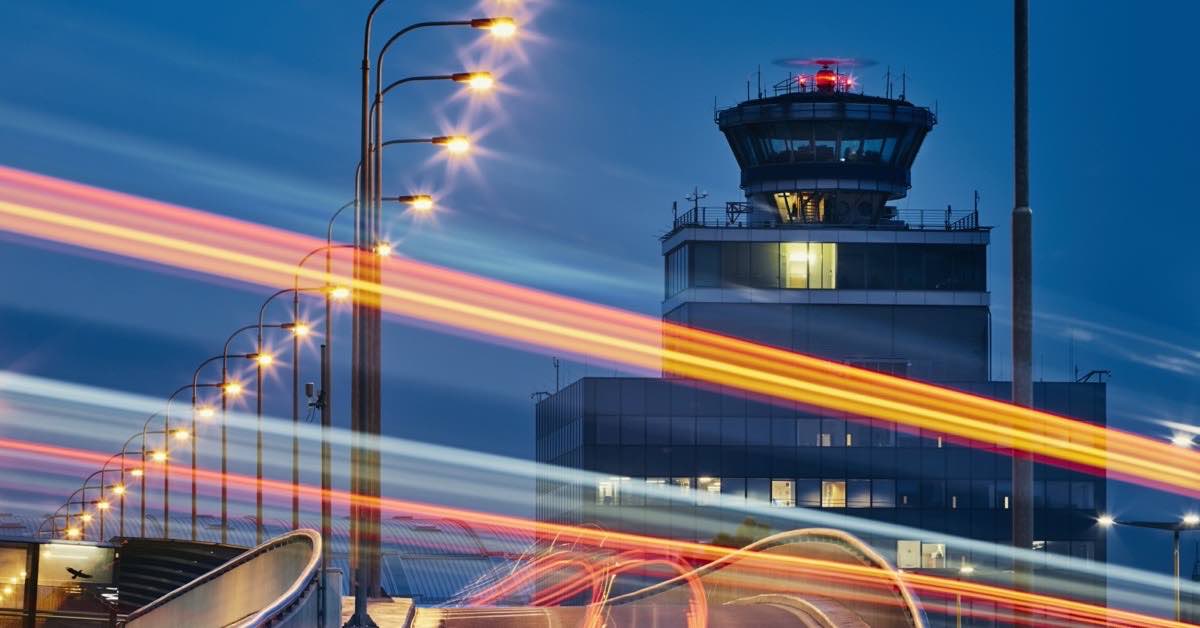Airports are significant drivers of economic growth and development in communities. However, airport proximity can present challenges to businesses and communities, ranging from noise pollution to zoning restrictions. In this article, we explore the challenges of airport proximity for businesses and communities and provide strategies for navigating them.

Understanding the Impact of Airport Proximity
When an airport is located near a business or community, it can significantly impact its operations. Noise pollution is a common issue that can disturb sleep and productivity. Airport proximity can also affect property values, air quality, and traffic congestion. Understanding the impact of airport proximity is crucial for businesses and communities to mitigate these effects.
Noise pollution is a common challenge in airports near businesses or communities. Aircrafts taking off and landing, baggage handling equipment and other aircraft-related activities can cause noise disturbances that negatively affect the local environment. This can be especially problematic for businesses and communities close to airports as it may disrupt their daily operations.
For instance, the loud noises of aircraft could reduce productivity in the workplace by making it difficult for employees to concentrate on their tasks. It may also make it hard for customers to communicate with each other when patronising a business or attending an event in the community.
To mitigate noise pollution from airports, businesses and communities should develop strategies that address this issue. These strategies should include implementing sound reduction technologies such as acoustic insulation or installing sound walls around airport runways. These measures can help reduce noise levels by blocking out loud sounds from aeroplanes while taking off or landing nearby.
Additionally, businesses and communities can look into creating buffer zones between them and the airport where soundproofing materials can be installed so that they are not directly exposed to aircraft noise pollution.
Implementing these solutions will help ensure businesses and communities close to airports have minimal disruptions caused by aircraft-related activities while allowing them to enjoy access to commercial aviation services without feeling overwhelmed by too much noise from planes in the area.
Zoning Regulations and Restrictions
Zoning regulations and restrictions are often in place to limit the impact of airport proximity on businesses and communities. For example, certain businesses, such as industrial or manufacturing, may not operate within a certain distance of an airport. Zoning restrictions can also limit the height of buildings to ensure safe flight paths. Businesses and communities need to be aware of these regulations and plan accordingly.
One example of a zoning regulation in place to limit the impact of airport proximity on businesses and communities is noise control. This type of regulation limits the amount of noise generated by aircraft and prevents commercial or residential development from encroaching too close to airports. These regulations ensure that businesses and residents can co-exist with airports without dealing with excessive noise from aircraft.
Another common zoning restriction is related to land use. This regulation requires businesses or residences near an airport to have a limited impact on surface operations, such as takeoff and landing paths for aircraft.
This prevents construction projects from physically blocking runway access or blocking pilot visibility while in flight. It also limits building heights near runways so that they do not interfere with aircraft navigation systems and ensures adequate clearance between structures built near airports and the runways themselves.
Finally, many communities implement height restrictions for buildings near airports for safety and aesthetic purposes. Height restrictions help prevent tower collisions between aircraft flying too low over a populated area while maintaining a uniform look along the flight path corridor to preserve the natural landscape around an airport’s perimeter.
Noise Abatement Strategies
Noise abatement strategies can help reduce the impact of airport proximity on businesses and communities. For example, sound barriers, noise-reducing insulation, and double-paned windows can help reduce noise levels. Businesses can also adjust their operations to reduce noise, such as scheduling deliveries during off-peak hours.
Sound barriers are one of the most common noise abatement strategies to reduce airport-related noise. Sound barriers are typically constructed with concrete or metal walls that block sound waves from passing through.
This can significantly reduce the aircraft-generated noise perceived by businesses and communities near airports. Soundproofing materials such as acoustic foam or blankets may also be installed inside buildings to help mitigate interior noise levels.
Noise-reduction technologies can also be employed in aircraft design and engine technology to reduce airport-related environmental noise impacts further. Aviation engineers have developed advanced engine designs that significantly reduce take-off and landing noises, while new flight path control systems can guide planes away from populated areas when possible.
The FAA has several initiatives to ensure compliance with federal aviation regulations regarding maximum permissible limits on aircraft noise exposure levels for residential and commercial areas near airports.
Local governments may implement land use restrictions near airports to minimise further potential conflicts between business/residential activities and aviation operations. These restrictions may include limiting building heights, for example, reducing the potential for increased noise due to taller structures reflecting sound waves towards populated areas below them.
Traffic Management and Access
Airport proximity can also affect traffic management and access for businesses and communities. The increased traffic can cause congestion and delays, which can impact the productivity of businesses. Providing alternate routes or adjusting delivery schedules can help mitigate these effects. It is also vital to ensure that emergency services can access the area during peak travel times.
Airport proximity can significantly affect traffic management and access due to the increased level of traffic. With higher traffic levels, there are more opportunities for delays and congestion. Businesses and communities close to airports may experience the consequences of additional noise pollution that can lead to quality-of-life issues. To mitigate these effects, businesses must plan for potential expansion or disruption caused by airport construction projects or other changes in air travel.
Businesses should also consider how increased airport passengers could impact their operations during peak hours or when airlines change their flight schedules. Additionally, businesses should be aware of how their location near an airport might affect their customer base, as some people may avoid the area due to noise or other reasons.
In addition, businesses should look into reducing transportation costs by keeping a closer eye on fuel prices and taking advantage of public transportation services offered at airports when possible.
Businesses and communities near airports need to understand how they will be affected to find solutions that work best for them while still accommodating the needs of travellers passing through their local airspace.
By understanding the potential challenges posed by airport proximity, businesses can make proactive decisions that help ensure smooth operations without compromising customer service satisfaction levels or impacting quality-of-life issues within nearby communities.
Economic Opportunities
Despite the challenges, airport proximity can provide economic opportunities for businesses and communities. Airports are major transportation hubs that can attract tourists, businesses, and investment. Businesses near airports can benefit from increased foot traffic and exposure to new customers.
Airports are major transportation hubs that offer various economic opportunities to nearby local businesses and communities. However, there can be a multitude of challenges that come with having an airport nearby. These include increased noise and air pollution, heightened security measures, higher land prices, and more traffic congestion.
Despite these potential drawbacks, a nearby airport has still been found to have positive economic impacts on businesses and communities. Companies can benefit from airport proximity through increased access to tourism markets as travellers seek out lodging near airports for convenience purposes or due to flight delays or cancellations.
This can increase regional employment rates due to the need for labour created by new businesses such as hotels and restaurants catering to travellers. Businesses located within a reasonable distance from airports may also take advantage of lower cargo shipping costs due to their proximity to the ports of entry where goods enter the country via plane or ship.
For communities, having an airport nearby often creates more outstanding access points for international trade opportunities and export markets, which can help spur economic growth in areas that might otherwise be overlooked by investors or partners abroad.
In addition, tax revenue generated by operations at airports is usually reinvested into surrounding infrastructure projects such as road improvements which helps create job opportunities for locals while boosting the overall quality of life standards in these areas.
Airport Proximity FAQs – Living Close to An Airport:
Property values near airports can be negatively impacted by noise pollution and other factors. However, proximity to an airport can also provide economic benefits and opportunities.
Zoning regulations and restrictions may limit certain types of businesses from operating within a certain distance of an airport.
To reduce noise levels, businesses can implement noise abatement strategies, such as sound barriers and noise-reducing insulation. They can also adjust their operations to reduce noise, such as scheduling deliveries during off-peak hours.
Airport proximity can cause increased traffic congestion and delays, which can impact the productivity of businesses. Providing alternate routes or adjusting delivery schedules can help mitigate these effects.
Yes, airport proximity can attract tourists, businesses, and investment, providing economic benefits and opportunities for businesses and communities.
Overcoming Airport Proximity Challenges: Key Strategies and Takeaways
In conclusion, airport proximity can present challenges for businesses and communities, but with proper planning and strategies, they can be navigated. Understanding the impact of airport proximity, adhering to zoning regulations and restrictions, implementing noise abatement strategies, managing traffic and access, and capitalising on economic opportunities are all key to navigating the challenges of airport proximity for businesses and communities.

